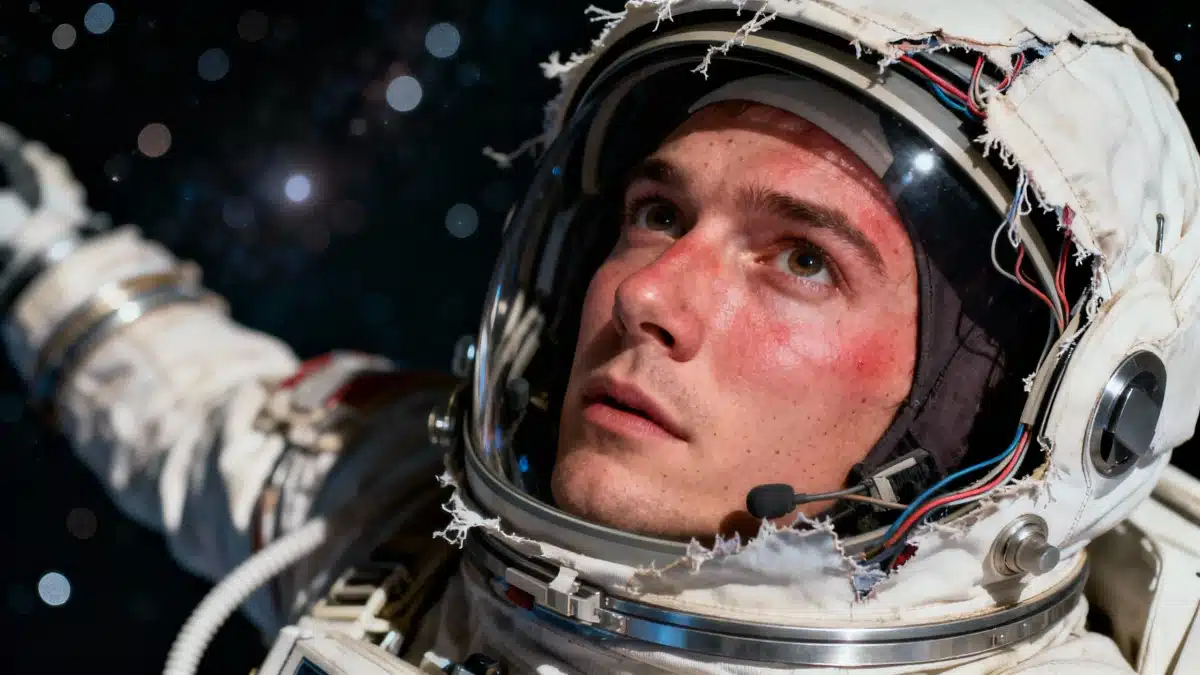Ever dreamed of being an astronaut, floating above the Earth and watching that tiny blue marble drift by? Hold on to your helmet: what really happens to your body without a spacesuit in space will have you thinking twice about that next zero-gravity vacation! Space may be poetic, but it’s also out to get you—fast.
Why Astronauts Suit Up: Not Just for Looks
- French astronaut Thomas Pesquet did three spacewalks recently from the ISS—and for all of them, he wore the famous (and, frankly, massive) protective suit.
- Spacesuits are custom-fitted, bulky, and cover astronauts head-to-toe. But it’s not a space fashion statement. The real question, asked by a curious Romuald Amougou on social media, is: What actually happens to a human body in space without that suit?
The First Step into the Void: Leonov’s Hair-Raising Stroll
- Cast your mind back to 1965. The Soviet Union’s Alexei Leonov performed humanity’s very first spacewalk during the Voskhod 2 mission.
- Wrapped in a so-called « flexible » suit and tethered only by a few meters of cable, he slipped into the abyss. His memories? An almost deafening silence, an impossibly black sky aglow with sunlight, and a planet Earth looking heartbreakingly tiny and alone.
- But the “flexible” suit became Leonov’s worst enemy. The pressure difference with space made the suit balloon almost instantly, trapping Leonov, making his hands and feet float inside the suit, and bashing him against the spacecraft. It swelled so much, he physically couldn’t fit back inside the airlock! His improvised fix (depressurizing the suit mid-spacewalk) nearly cost him his life. In the end, after 12 minutes and 9 seconds, Leonov survived—but not without a terrifying firsthand lesson in the risks of space exposure.
The Ruthless Dangers of Real Space
- So what makes the cosmic void so deadly? Two words: vacuum and extremes.
- No atmosphere means no breathable air—just a ruthless void barely visited by stray cosmic particles. Out there, forget about the oxygen and carbon dioxide our bodies rely on. And forget about sound, too: without a medium, the epic « pew pew » of Star Wars blasters just wouldn’t happen!
- Microgravity (weightlessness) is already life-altering inside the ISS. No acceleration, no gravity pulling you down: it’s all perpetual floating. Even the simplest movement becomes a major effort.
- The big killer, though, is decompression. Our blood and body fluids operate at Earth’s atmospheric pressure—about 37ºC. Expose that to near-zero pressure, and the boiling point of fluids drops below our body temperature. The result? Bodily fluids begin to boil, a gruesome process known as ebullism. This is not just a gross party trick; it kills in seconds. That’s why a suit must keep pressure at least at 0.3 bar, or else.
- It doesn’t stop there. In the brutal temperature range of space, any exposed part of your body could freeze or roast thanks to radiation: from -150ºC in shadow to +150ºC in sunlight. That’s up to a 300ºC difference between your sun-facing and sun-shy sides—a cosmic two-face nobody wants.
Suits: Your Only Lifeline Against Cosmic Peril
- The suit is far more than insulation: it provides breathable air, thermal protection, and shields against both sunlight and cosmic radiation.
- Speaking of radiation, space is swarming with highly energetic cosmic rays, mostly protons but also helium and even heavier nuclei. Some are spat out by solar eruptions; others come from interstellar or even intergalactic space. These rays are highly radioactive and their effects on human beings—especially our nervous systems and DNA—are still not fully understood. No helmet, no shield. Not good.
- That’s why astronaut suits are meticulously engineered to handle every conceivable danger space throws at them. But even so, surprises do happen: in 2013, astronaut Luca Parmitano’s helmet started filling with water due to a cooling system leak during a spacewalk, a reminder that cosmic hazards sometimes come with a twist of irony.
- Every spacewalk is a calculated risk. Astronauts train for all scenarios, especially for a speedy dash back to the safety of the ISS hatch if disaster strikes.
In short: If you ever get the chance for a spacewalk, don’t forget your suit—not even for a « quick pic, » unless you want your fluids to boil, your body to freeze (or fry), and a face-to-face with lethal cosmic rays. When it comes to the final frontier, the suit isn’t just a uniform; it’s your last, best friend.

John is a curious mind who loves to write about diverse topics. Passionate about sharing his thoughts and perspectives, he enjoys sparking conversations and encouraging discovery. For him, every subject is an invitation to discuss and learn.






